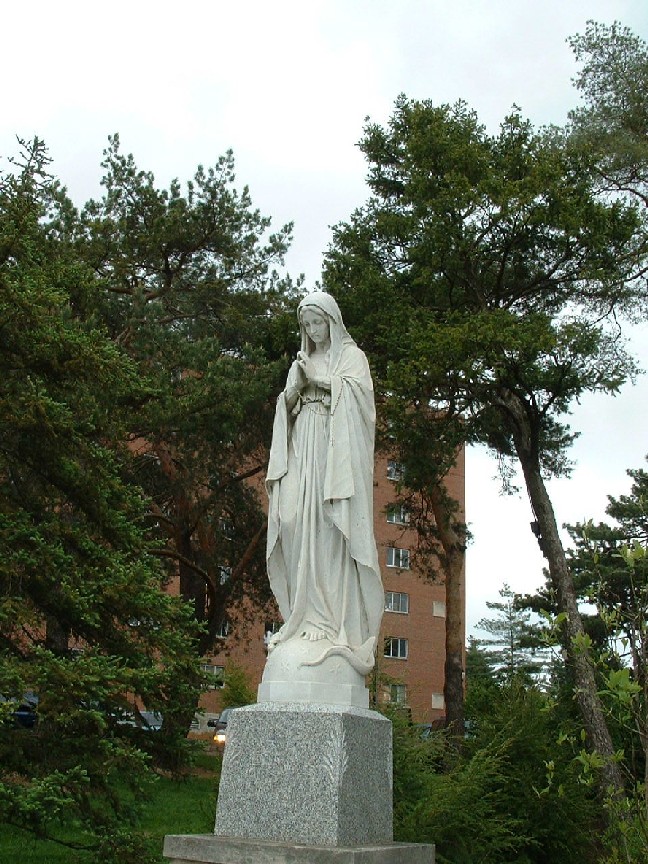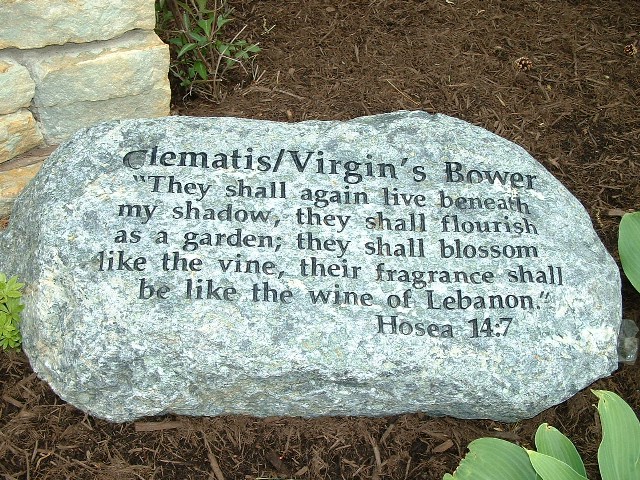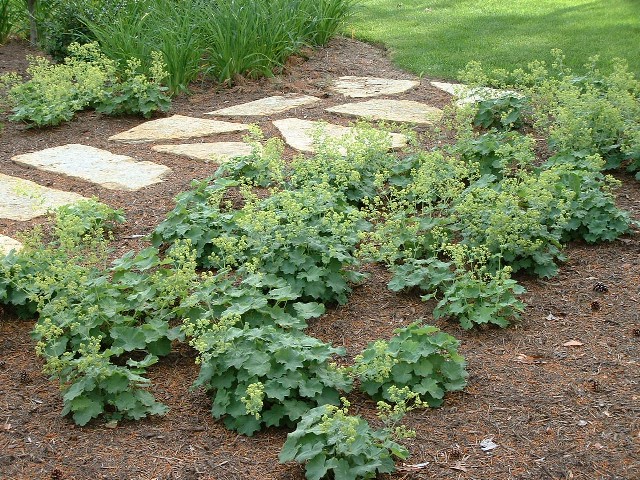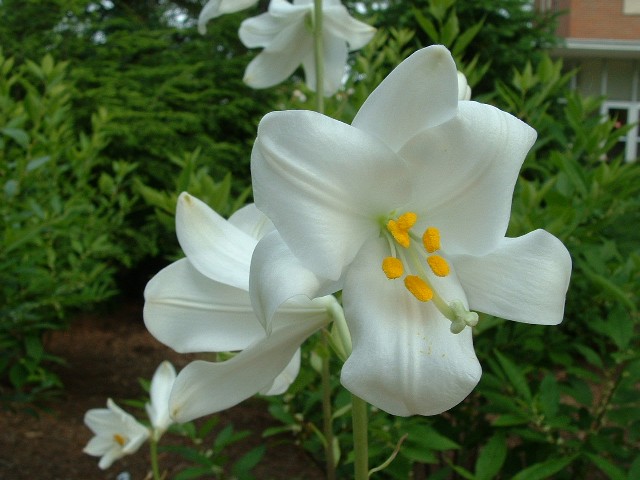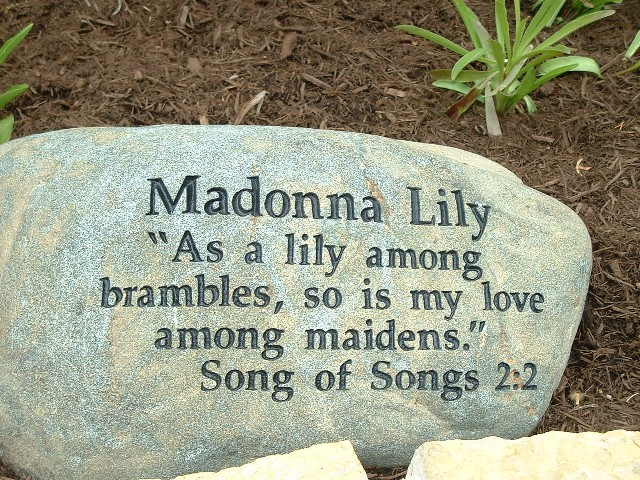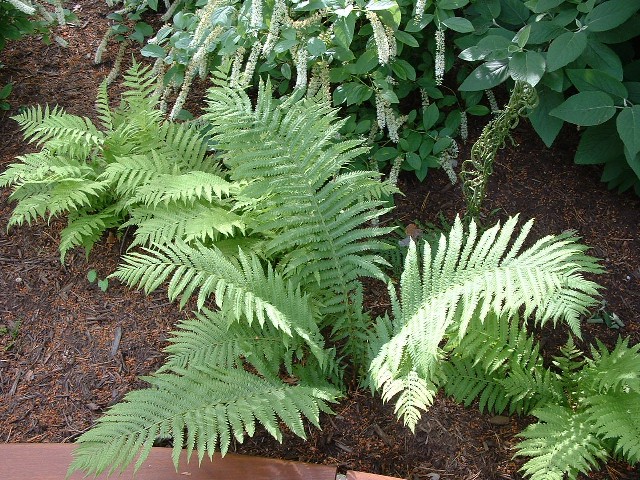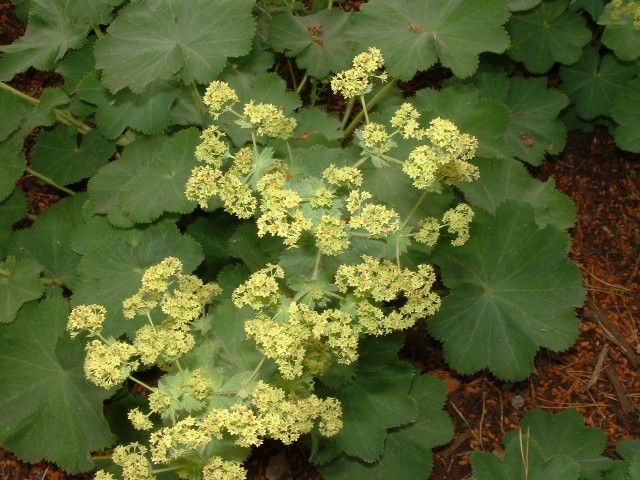Serenity Pines Garden: University of Dayton
Serenity Pines Garden: University of Dayton
Where Our Lady’s Flowers Inspire Prayer and Reflection
In Celebration
The garden was dedicated in October 2001 to the memory of campus administrator Joe Belle and others who died while they were students, faculty or staff members at UD. Belle, who died in July 2000 after a fourteen-month battle with brain cancer, had envisioned a garden that would offer a contemplative place for students. He called it Mother Mary’s Sanctuary and had preliminary plans drawn that included a pine grove setting for uplifting the spirit, a water feature for reflection, intimate areas for private thoughts and a Mother Mary sculpture for inspiration. A plaque bears these words:
This garden was the vision of Joe Belle, whose caring and dedicated service to students we celebrate in its serenity.
Joseph A. Belle
B.S. ’73, M.S. ‘75
Served UD 1973-2000

Garden Honors Mary
Belle’s vision is reflected in the present garden, and the Mary-named flowers were chosen as a way to honor Mary and help people discover the spiritual as they spent time in the garden. The garden was named Serenity Pines to make it inviting to people of all faiths, according to Belle’s widow, Barbara. She chose the quotes inscribed on the stones, finding key words or phrases from the book, “Mary’s Flowers: Gardens, Legends and Meditations,” that tell the story of the flowers and their association with Mary and scripture.
Walking through the garden, one finds, in addition to the forget-me-nots, clusters of five other Mary-named plants. A smooth boulder bearing a relevant quotation identifies and complements each group of plants.
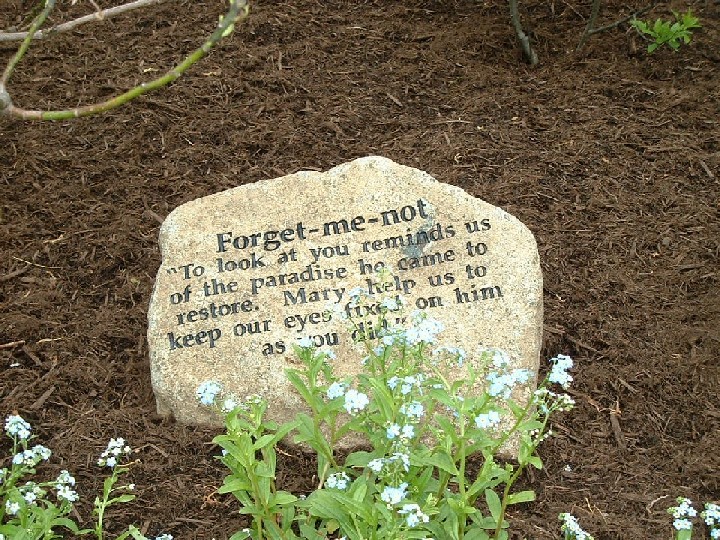
Forget-me-nots
The Eyes of Mary
Here the forget-me-nots bloom in early spring, circling a large rock that bears the meditation: “To look at you reminds us of the paradise he came to restore. Mary, help us to keep our eyes fixed on him as you did.” Forget-me-nots were called “The Eyes of Mary” in medieval times, and a legend told of their naming by Jesus
Forget-me-nots

The Eyes of Mary
Here the forget-me-nots bloom in early spring, circling a large rock that bears the meditation: “To look at you reminds us of the paradise he came to restore. Mary, help us to keep our eyes fixed on him as you did.” Forget-me-nots were called “The Eyes of Mary” in medieval times, and a legend told of their naming by Jesus
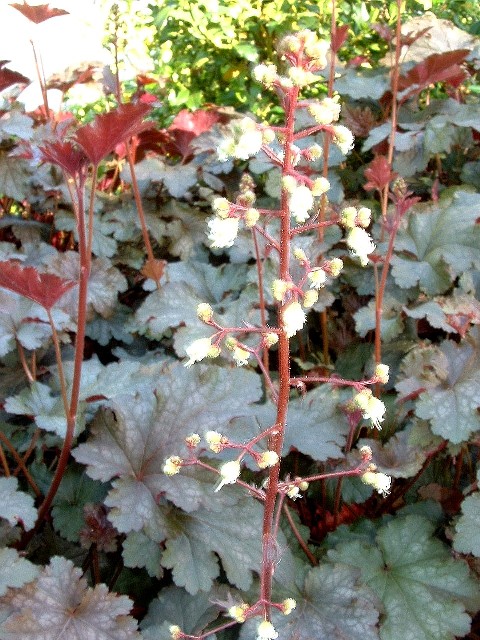
Coralbells
Our Lady's Bells
Summer nears and soon clematis, known as Our Lady’s Mantle, blossoms and the Madonna Lily blooms. Tiny white coral bells appear; all bell-like plants are called Our Lady’s Bells. Most of the plants found in this terraced garden are associated by name or legend with Mary, Mother of God.
Coralbells

Our Lady's Bells
Summer nears and soon clematis, known as Our Lady’s Mantle, blossoms and the Madonna Lily blooms. Tiny white coral bells appear; all bell-like plants are called Our Lady’s Bells. Most of the plants found in this terraced garden are associated by name or legend with Mary, Mother of God.
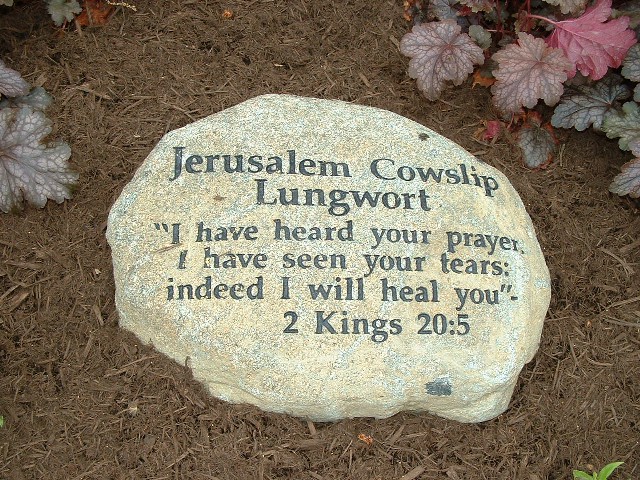
Jerusalem Cowslip
Virgin Mary's Tears
Jerusalem Cowslip (Pulmonaria officinalis) is called Virgin Mary’s Tears. It is said that the spotted cowslip was at Mary’s feet as she stopped to nurse her son Jesus while on the way to the temple to present him to God. The blossoms turned blue as they reflected her eyes but the buds grew pink as her eyes reddened from weeping at the thought of Jesus’ future suffering. This verse from 2 Kings 20:5 is incised on a rock to the right of the fountain: I have heard your prayer, I have seen your tears; indeed I will heal you.
Jerusalem Cowslip

Virgin Mary's Tears
Jerusalem Cowslip (Pulmonaria officinalis) is called Virgin Mary’s Tears. It is said that the spotted cowslip was at Mary’s feet as she stopped to nurse her son Jesus while on the way to the temple to present him to God. The blossoms turned blue as they reflected her eyes but the buds grew pink as her eyes reddened from weeping at the thought of Jesus’ future suffering. This verse from 2 Kings 20:5 is incised on a rock to the right of the fountain: I have heard your prayer, I have seen your tears; indeed I will heal you.
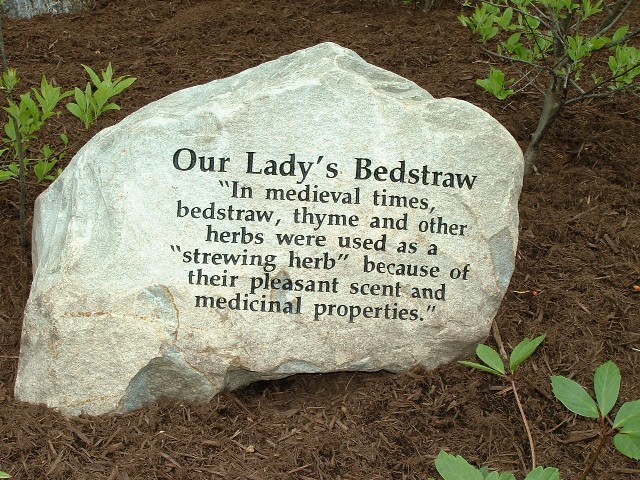
Yellow Bedstraw
Our Lady's Bedstraw
Yellow Bedstraw (Galium verum) is also called Our Lady’s Bedstraw. It is said that the white blossoms of bedstraw turned to gold with the radiance of Jesus at the hour in which he was born. A large rock near the plants bears these words: In medieval times bedstraw, thyme and other herbs were used as a “strewing herb” because of their pleasant scent and medicinal properties.
Yellow Bedstraw

Our Lady's Bedstraw
Yellow Bedstraw (Galium verum) is also called Our Lady’s Bedstraw. It is said that the white blossoms of bedstraw turned to gold with the radiance of Jesus at the hour in which he was born. A large rock near the plants bears these words: In medieval times bedstraw, thyme and other herbs were used as a “strewing herb” because of their pleasant scent and medicinal properties.
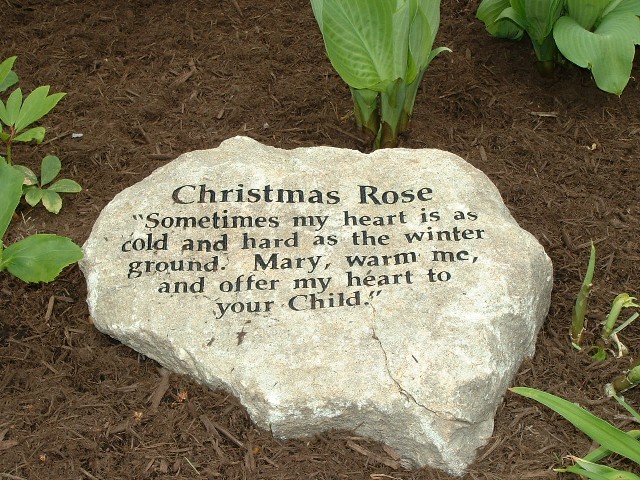
Christmas Rose
Holy Night Rose
Christmas Rose (Helleborus niger) is called the Holy Night Rose and a legend tells of Madelon, a young shepherd girl who had no gift for Jesus the night he was born. God heard her crying and sent the angel Gabriel to help her. He touched the frozen earth with his staff and creamy white blossoms flushed with pink sprang up everywhere. Madelon filled her arms with the flowers and ran to decorate Jesus’ bed and the stable where Mary had borne him. These lines from the meditation on the Christmas Rose are found on a rock in the garden: Sometimes my heart is as cold and hard as the winter ground. Mary, warm me, and offer my heart to your Child.
Christmas Rose

Holy Night Rose
Christmas Rose (Helleborus niger) is called the Holy Night Rose and a legend tells of Madelon, a young shepherd girl who had no gift for Jesus the night he was born. God heard her crying and sent the angel Gabriel to help her. He touched the frozen earth with his staff and creamy white blossoms flushed with pink sprang up everywhere. Madelon filled her arms with the flowers and ran to decorate Jesus’ bed and the stable where Mary had borne him. These lines from the meditation on the Christmas Rose are found on a rock in the garden: Sometimes my heart is as cold and hard as the winter ground. Mary, warm me, and offer my heart to your Child.
Ferns and Other Plants Recall Mary's Life
Ferns are called Our Lady’s Hair because the fronds look like flowing marceled tresses. Ferns grow in several areas of the garden.
Also in the garden are dogwood trees, representing the Cross; a variety of viburnum known as Our Lady’s Pincushion; holly bushes, called Christmas Holly; alchemilla or Lady’s Mantle, known as Our Lady’s Mantle, and Bethlehem Sage, a spotted lungwort called Our Lady’s Milk because the spots are said to represent drops of milk which fell from Our Lady’s breast when she was feeding the infant Jesus.
Lady's Mantle (Alchemilla mollis) is callled "Our Lady's Mantle" because the leaves and the blossoms drape over the ground like a mantle. A Legend tells us that Our Lady wore Lady's Mantle as an adornment.
Garden Invites Reflection
– Vincenzina Krymow
A place for the UD community to meditate, contemplate, pray and read, the garden is surrounded by pine trees, known as the Hand of Christ. Winding paths and wooden benches invite the visitor to rest and reflect.
A millstone with a small water fountain bubbling from its center anchors the verdant six-level garden. Inscribed around the millstone’s circumference are these words from Blessed William Joseph Chaminade:
I am like a brook that makes no effort to
overcome obstacles in its way. All the
obstacles can do is hold me up for a while,
as a brook is held up; but during that time
it grows broader and deeper, and after a while
it overflows the obstruction and flows along again.
That is how I am going to do my work.
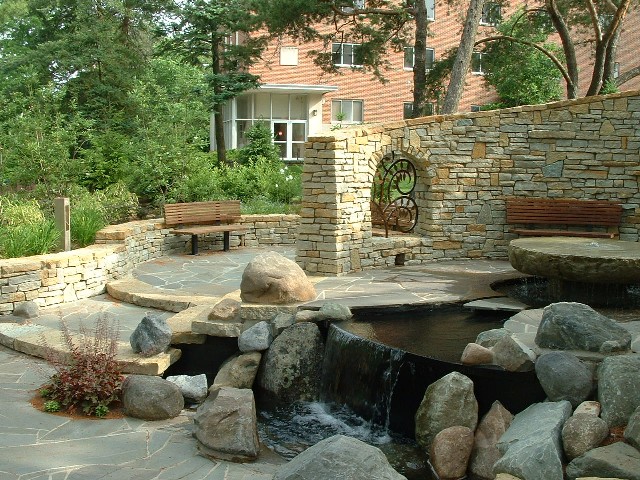
All About Mary includes a variety of content, much of which reflects the expertise, interpretations and opinions of the individual authors and not necessarily of the Marian Library or the University of Dayton. Please share feedback or suggestions with marianlibrary@udayton.edu.

